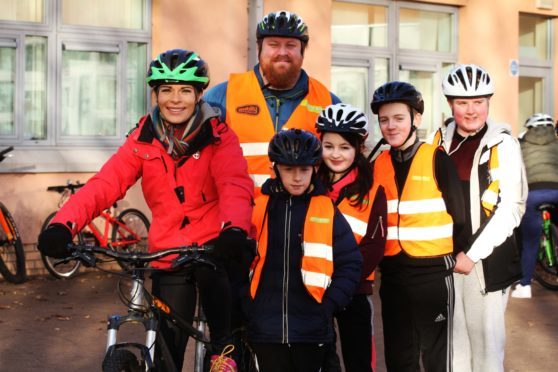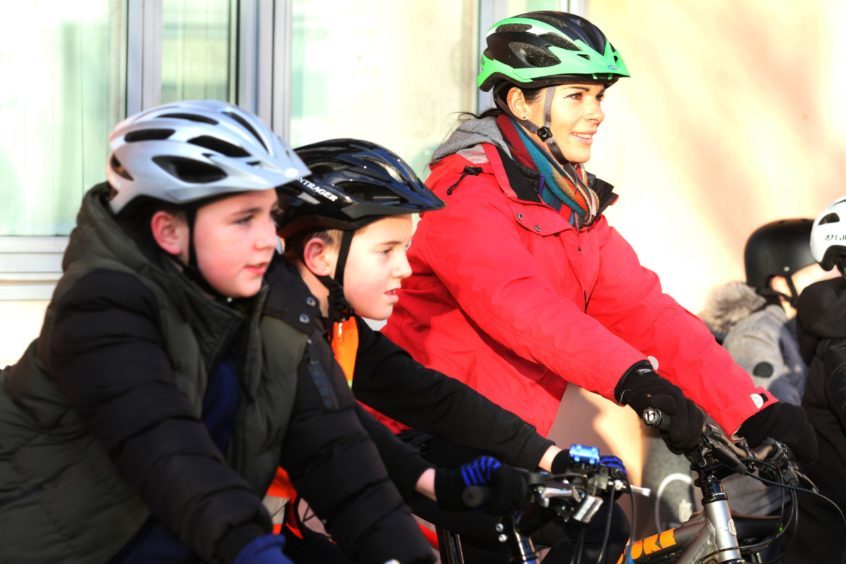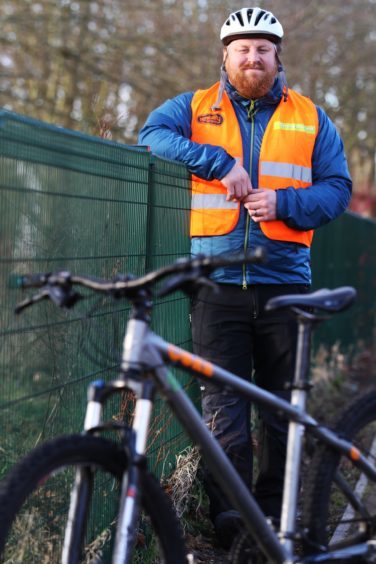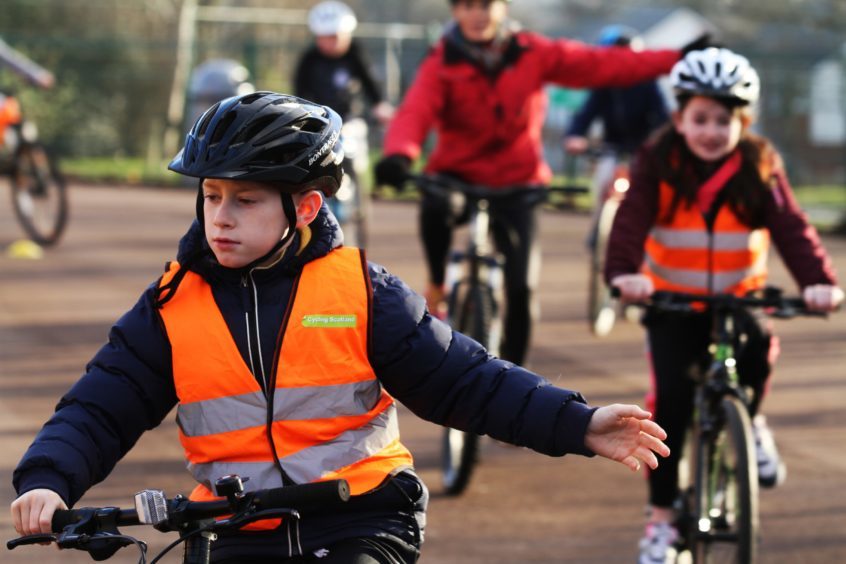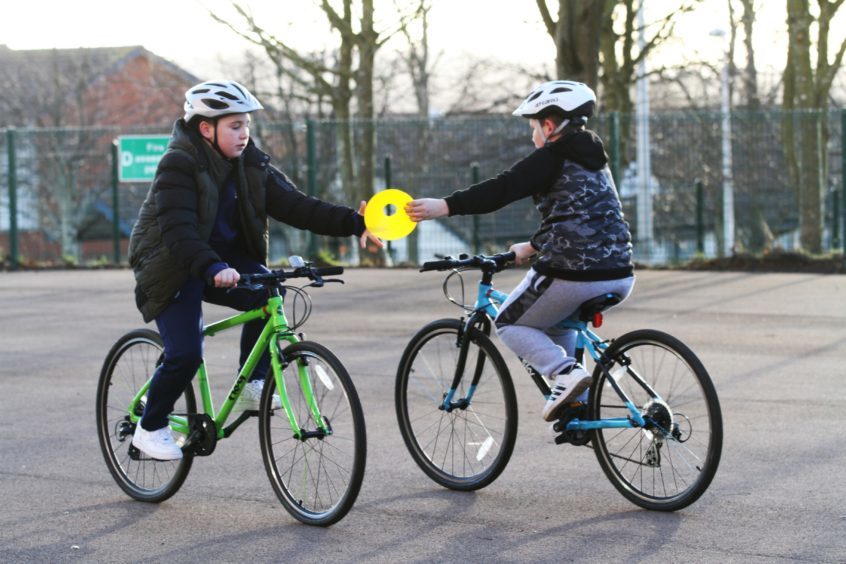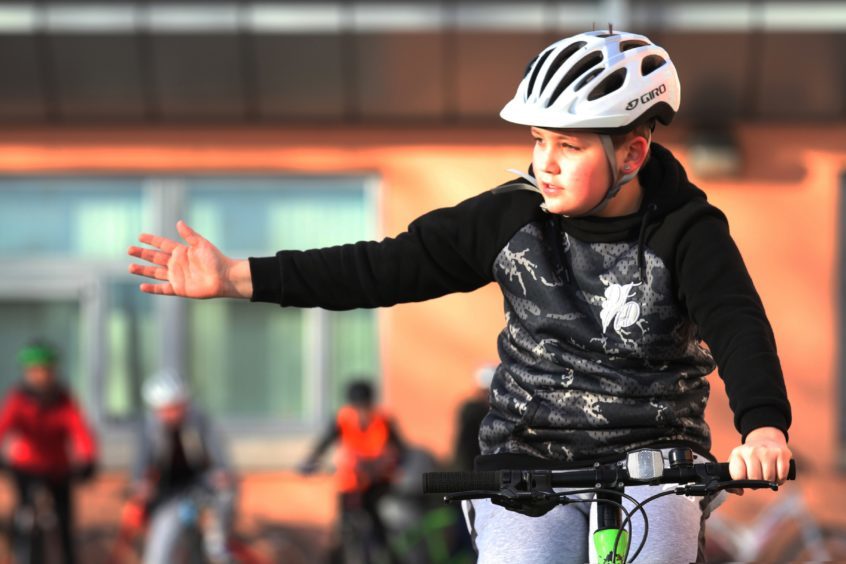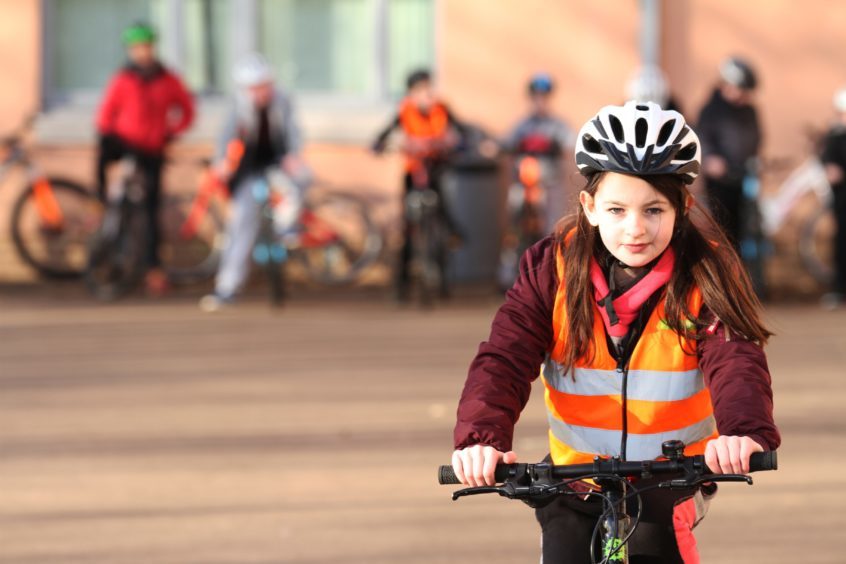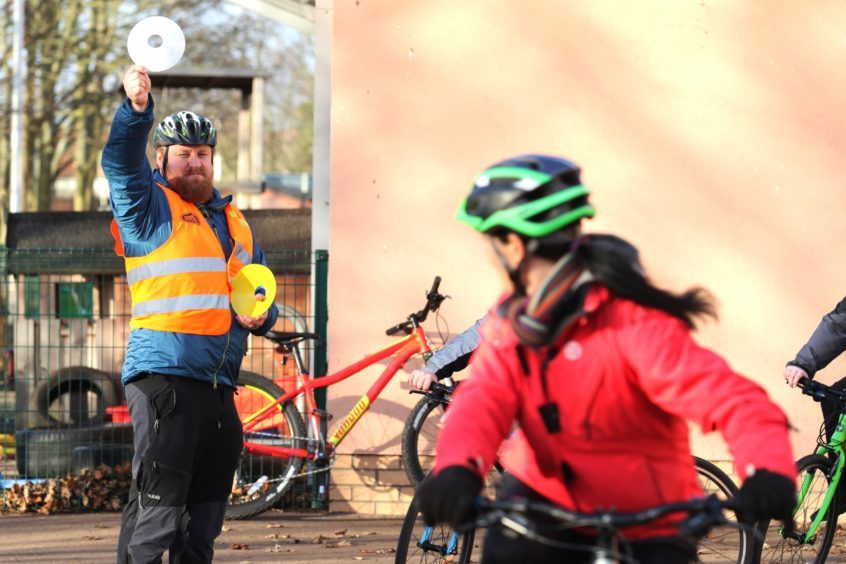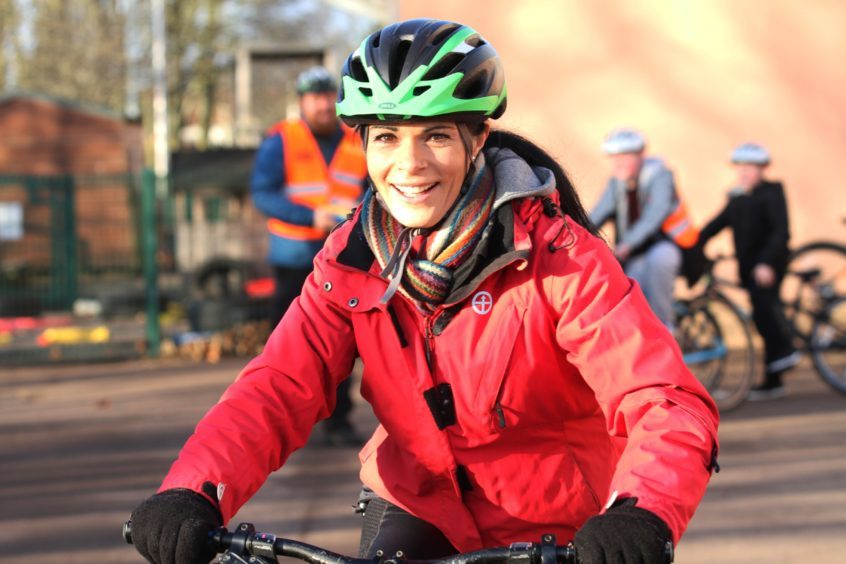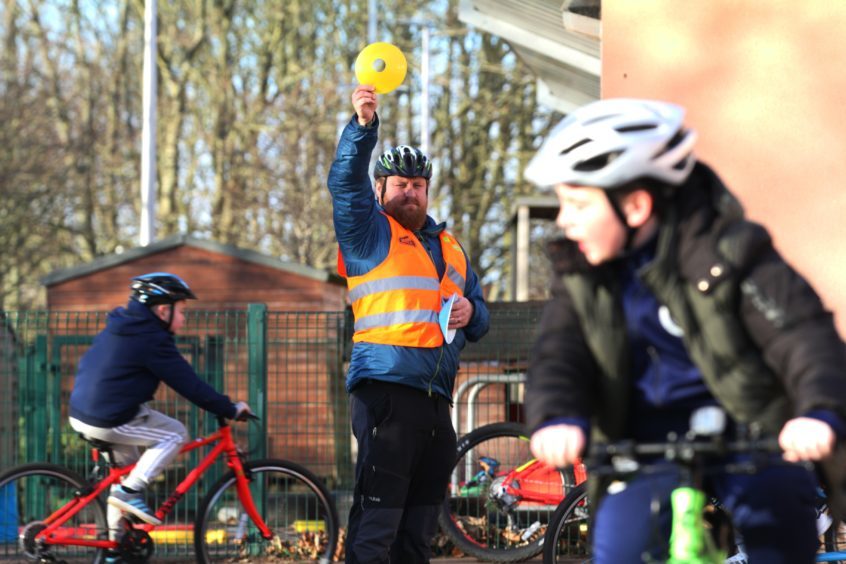Want to be comfortable, confident and safe in the saddle? The best thing you can do is join a bikeability session, as Gayle discovers
As our roads become increasingly congested with fume-belching vehicles, there’s a major push to get more of us to cycle – to work, to the shops or to school.
But getting on a bike can be a daunting prospect, whether you’re five, fifteen or fifty years old.
That’s why Bikeability, the modern day equivalent of cycling proficiency, is so important.
The cycle training scheme is designed to give children the skills and confidence they need both to cycle safely on the roads and to encourage them to carry on cycling into adulthood.
As someone who is fairly rickety on a bike, I could well benefit from such a scheme, so I hot-foot it to Dundee’s Ballumbie Primary School where Grant Pettigrew is taking a group of primary seven pupils through some basic cycle safety.
“A lot of kids think they can ride bikes safely, but the truth is, they can’t,” he says.
“The emphasis is on getting them to cycle to school or play on their bikes safely and correctly. It’s about being road savvy; being aware of hazards, of other road users, of looking and seeing what’s around and taking appropriate action.”
Once Grant, 36, bikeability coordinator for Dundee, has got all the kids (and myself) geared up with bikes and helmets, we’re good to go.
It’s a freezing cold day and along with Ancrum Centre volunteer Connor Sangster, 21, we’re keen to get started.
First up is a basic bike check and then we slalom in and out of cones in the playground which helps to improve cornering and balance.
Then we lift one arm out to the side, as if we’re indicating.
“Don’t just fling your hand up and down quickly – count out one elephant, two elephants, three elephants,” instructs Grant.
“You need to signal for the right amount of time or you won’t be seen.”
Next up is getting us to cycle half way up the playground and then turn round to see what colour of cone Grant is holding up, and then calling out that colour. This helps develop balance, confidence, awareness and turning ability.
Another exercise involves cycling towards someone and passing over – or receiving – a cone without dropping it. Again, this boosts confidence, stability, and sense of spatial awareness.
We also enjoy taking part in “slow races”. Instead of hurtling along at full speed, we have to go as slowly as possible, without falling off and trying not to zig-zag or wobble. It’s harder than it sounds but the point is to develop control at slow speeds.
Drawing a fake road and T-junction on the ground with chalk, Grant gets us to practice approaching, signalling and making our manoeuvre.
“Look, signal, look again and then make the manoeuvre if it’s safe,” he instructs.
That second look is what Grant terms the “lifesaver”. Cars coming flying out of nowhere and this final glance could save your life.
The kids are doing so well that Grant reckon they’ll be cycling on real roads the following week.
They’ll start off on quiet roads, T-junctions in cul-de-sacs and progress from minor to major roads.
One thing he emphasises is that cyclists have as much right to be on the road as other users.
“Don’t squeeze yourself into the gutter because you might or hit a drain and fall off,” he warns.
“I want the kids to realise that yes, they’re vulnerable, but if they do the right thing and play safe, they’ll be less so. Much of it is common sense such as not cycling dressed entirely in black because you won’t be seen.”
Grant’s hope is to deliver bikeability in 20 schools in Dundee in 2018.
“I have 15 schools committing to Bikeability at the moment and I am delivering four days a week,” he says.
“The hardest thing is getting schools to commit but cycling is a massive life skill and being safe on the roads is vital.”
info
While Grant travels round Dundee schools himself, he’s on the hunt for volunteers, whether parents or staff, to help out.
Free cycle training assistant (CTA) training is provided. Ultimately, he hopes that schools will be able to deliver bikeability themselves.
Bikeability Scotland is managed by Cycling Scotland, the national organisation for cycling promotion.
Each of the 29 local authorities that deliver Bikeability Scotland has a local coordinator like Grant to help schools get more pupils cycling.
See www.cycling.scot/bikeability-scotland or contact Grant at grant.pettigrew@leisureandculturedundee.com
Bikeability is aimed at children but if adults are interested they should contact Cycling Scotland.
